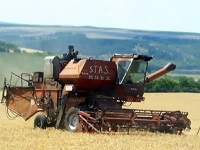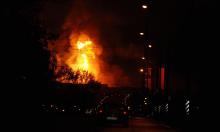Do Russians need to prepare for hunger?
Will Russia face a threat of famine if food imports fall, given that over the last 20 years the agricultural production has decreased? The situation around Ukraine and the threat of tougher sanctions reiterated by Europe and the United States made the Government of Russia consider food safety issues at the meeting on March 27.

In recent years, a stereotype has formed that Russia is completely dependent on food imports. This was true for the presidency of Boris Yeltsin then, in the 1990s, the country's dependence on the main types of food was 50-70 percent. In the event of unforeseen complications it posed a threat of food collapse, and, of course, was taken into account by Western politicians as a tool of potential threats and pressure on the Russian leadership.
The situation began to change in mid-2000s. By 2010, the government policy began to take a meaningful and systematic shape, as stated in the Food Security Doctrine. The specific criteria includes domestic products of eight kinds, including food grain, sugar, vegetable oil, meat and meat products, milk and dairy products, fish products, potatoes, and salt. The baseline indicators also include physical and economic accessibility of quality food for the population.
Here is the result: in 1995, food imports accounted for almost 30 percent compared to estimated 13 percent in 2013 at approximately $40 billion. Food worth about three billion was imported from CIS countries that are unlikely to join the proposed sanctions. $11 billion worth of goods are imported from developing countries. These are products that cannot be grown or produced in Russia - coffee, tea, citrus fruits, bananas and so on.
Russia today is fully covered by domestic production for flour, pasta, and sugar, 85-90 percent for vegetable oil, canned meat and confectionery. 50 percent of milk and dairy products are covered by the allied brotherly Belarus. Germany supplies 12 percent, and Finland - 8 percent of dairy.
So far Russia has a vulnerable position in terms of fish (40 percent of import comes from Norway), meat and milk. However, these types of supplies from the regions controlled by the U.S. and its allies amount to 15-17 percent. Purchases of poultry, beef and pork from the United States almost completely stopped due to increased domestic production and re-orientation towards the South American markets.
Generally, to ensure complete independence from imports, Russia needs to additionally produce and grow cattle for meat worth $2.5 dollars, fish and fish products worth $2.5 billion, dairy products worth $1 billion, apples and pears worth $1 billion, or $7 billion it total.
Judging by the numbers presented at the meeting, Russian agriculture is steadily increasing its potential. The most problematic kind of food is meat and meat products whose production last year amounted to 5.2 million tons, an increase of 10 percent. This has reduced imports of meat by almost 10 percent, leaving many American farmers without work. The production of dairy products and butter has increased. According to the Minister of Agriculture of Russia Nikolai Fyodorov, overall food production index was at 102.3 percent.
Russia will not face a threat of famine if the U.S. and the EU try to freeze the food supply to Russia.
There will be certain difficulties with exotic fruit, wine, expensive seafood, and meat delicacies, but Russia today is self-sufficient not only in the foreign policy, but also in terms of its ability to feed itself. Russia produces 60 to 90 percent of all required food.
The increase in the production of food remains a strategic goal. In the next five years Russia needs to not only become fully independent from food imports, but become the world's largest food exporter.
Yuri Skidanov
Pravda.Ru
Subscribe to Pravda.Ru Telegram channel, Facebook, RSS!




